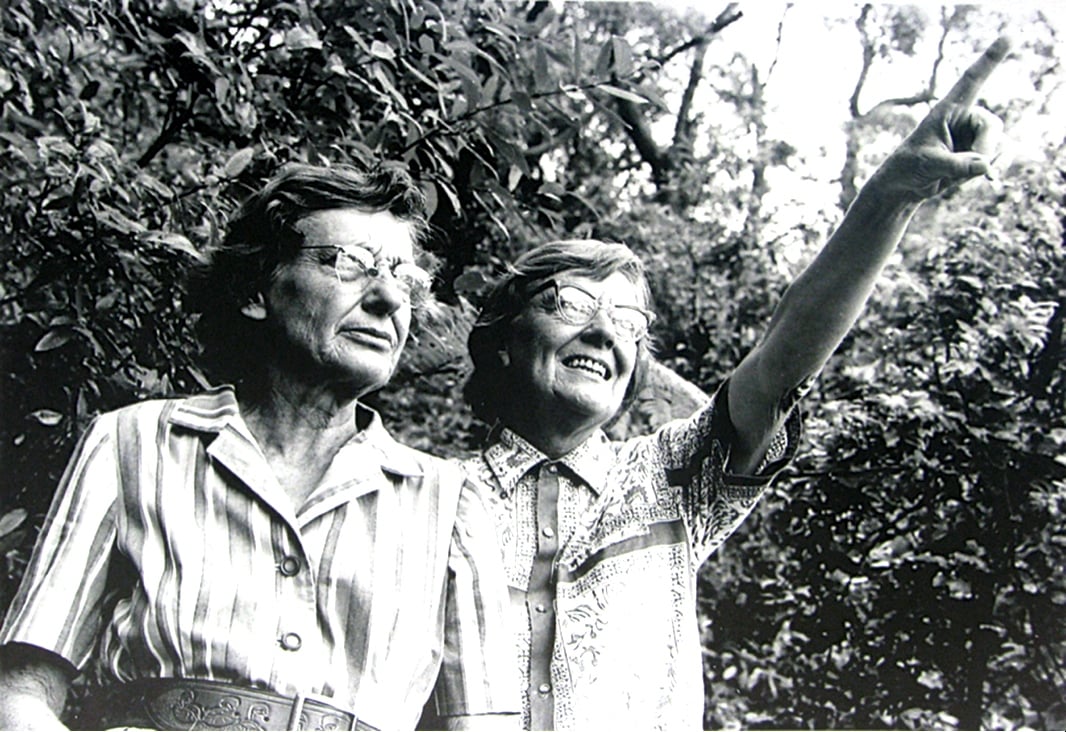In the 1970s Sydney former industrial chemist, Joan Bradley, and her sister, Eileen, developed an approach to regenerating the Australian bush which would revolutionise the industry.
The Australian National Trust was first established in New South Wales in 1945 by Annie Wyatt. Her determination to preserve and protect our heritage attracted a loyal following, and together they raised community consciousness of widespread destruction of the built and natural heritage in Sydney.
The National Trust movement quickly spread across Australia and branches were established in each Australian state and territory by 1960.
The beginning of bushland management

The National Trust actively commenced its bushland management service in 1976. It was in this year that sisters, Joan and Eileen Bradley (pictured), were employed by the organisation to restore a remnant of blue gum forest at Beecroft in Sydney.
The Bradley sisters developed a series of weed control and native vegetation recovery techniques. After considerable investigation and consultation, the National Trust adopted these techniques which are now known as the ‘Bradley Method’ (or in some instances the ‘Minimal Disturbance Method’).
It is a simple and adaptable approach to bush regeneration that is based on helping the bush to help itself. The benefits are long lasting and it works for both small and large areas.
The simple steps include:
- Careful preliminary survey work to identify the native and weed plant species on a site.
- Commencing weed removal in areas of bushland where the weeds were sparse and then moving gradually into areas of denser infestation.
- Following weed removal, the leaf litter was carefully replaced and the soil disturbed as little as possible to discourage weed regrowth.
- The weeding was not to be hurried, allowing native plants to germinate and regrow before proceeding to the next area.
Their method formed the beginning of bush regeneration best practice in New South Wales and the essence of the principles still guides modern techniques today.
Bringing back the bush
By the early 1980s, multiple local councils in the Sydney area (including North Sydney, Manly, Kogarah, Hurstville and Ryde) had approached the National Trust to carry out bush regeneration surveys of their local reserves, which resulted in many councils commissioning the National Trust to undertake bush regeneration work on a regular basis.
Rapid expansion followed, with the bush regeneration team growing in size and work spread to regional locations, such as Wingham Brush, Rotary Park (Lismore) and North Entrance Peninsula.
In the mid-1980s, the newly appointed Trust Conservation Director arranged a seminar to investigate bush regeneration methods and arranged for the creation of a new National Trust Bush Management Advisory Committee to underpin the scientific basis of the organisation’s bush regeneration work.
Not long later and after further investigations into best practice techniques, the National Trust recognised that different weed-infested sites required different treatments. It was therefore determined that a new adapted approach would be adopted which incorporated some of the careful labour intensive techniques of the Bradley Method in areas of healthy bushland with few weeds but also included a more pro-active approach to the clearance of weeds in the heavily infested bushland.
Forty-five years since its inception, the National Trust’s Bushland Management Service (BMS) continues to work with numerous local government authorities, and its commitment to conservation and values still remain at the heart of everything we do.
The National Trust is a leading conservation organisation and bushland management remains one of the National Trust’s most visible and important programs, employing a highly trained, talented and committed workforce.
BMS provide vital funding for the broader work of the organisation, bushland management profits are reinvested in the National Trust to conserve, protect and promote the natural, cultural and built heritage of New South Wales.
